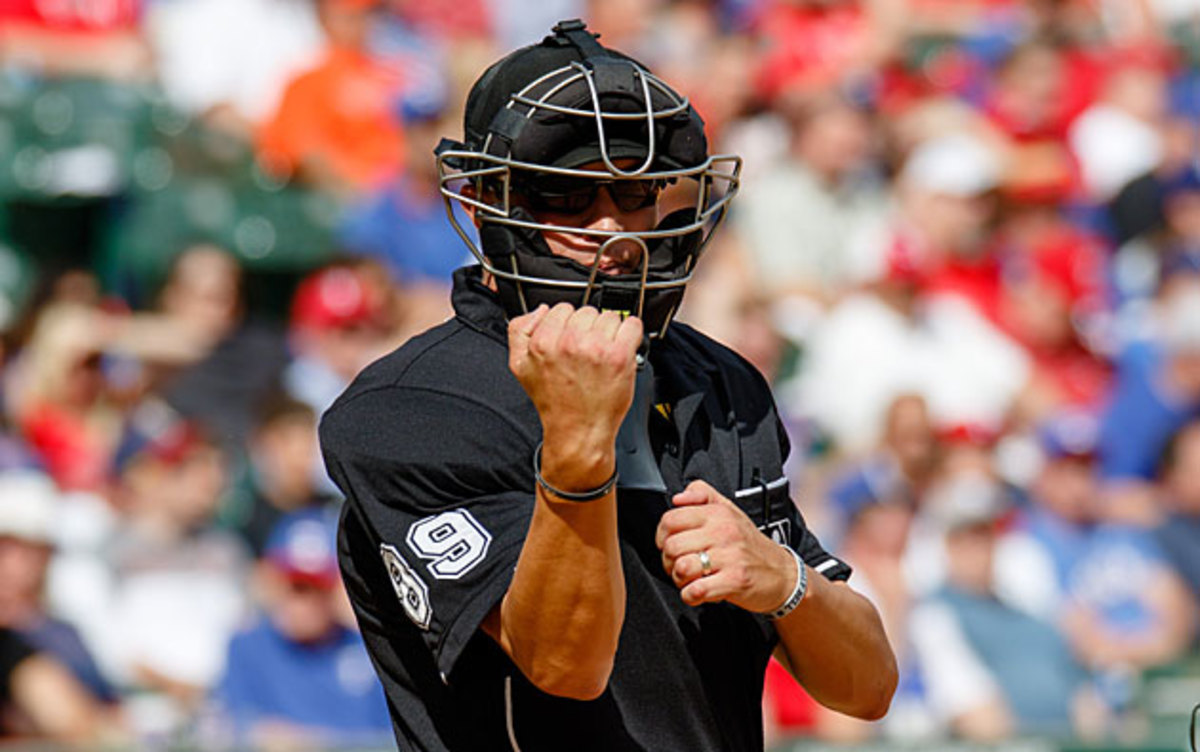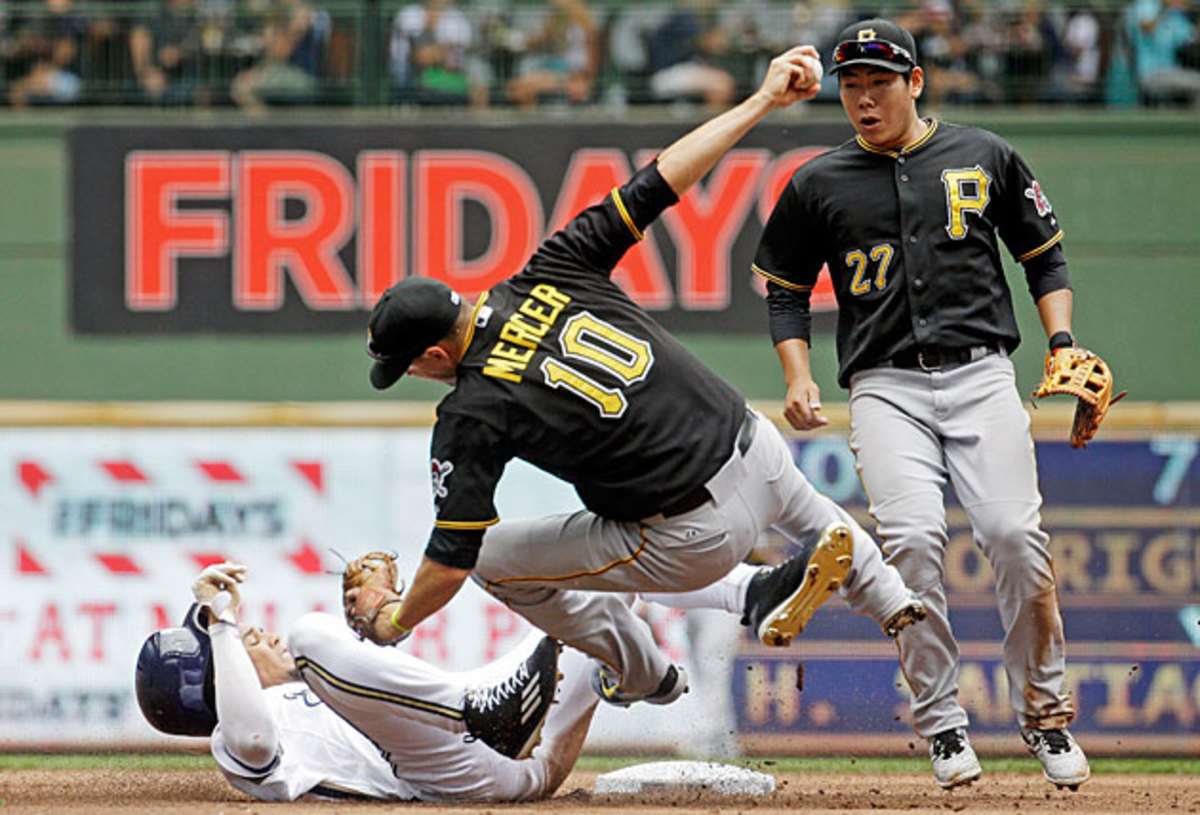As player complaints rise, separating fact from fiction about the strike zone

To the weather, summer road construction, airline baggage fees and Congress, you can add the strike zone as guaranteed kindling for gripe sessions. Indeed, MLB vice president Joe Torre has been conducting such sessions with players as he travels around ballparks. He has heard so much second-hand grousing about the strike zone that he thought it was a good idea to listen to the players and to shoot down any misconceptions they have.
"The number one thing I want to get across to them is that this has nothing to do with the pace of play initiatives," Torre said. "I don’t want them to think more strikes are getting called for a faster pace, because that’s not the case."
I asked Torre about the size of the strike zone. A swell is building among hitters that the zone is getting larger, particularly at the bottom of the zone.
"The numbers tell us there’s no change in pitches being called strikes at the bottom of the zone," he said. "It’s the same as last year. Now last year it was a little [lower] than the year before that."
Power Rankings: Dodgers ride dominant pitching to second spot
Complaints about the strike zone are a baseball tradition. The volume of such complaints seems to have grown this year—almost entirely from hitters. On Sunday, Bryce Harper of the Nationals, when asked about another scoreless start by the Dodgers' Zack Greinke, said, “When you’re getting six inches off the plate, it’s tough to face him.”
The size of the strike zone never has been more important because the overall quality of pitchers’ stuff never has been better. Said Washington infielder Danny Espinosa, “The pitches that break down and late are the toughest to hit, so if you call those pitches strikes, it becomes even harder.”
• SI VAULT: Craig Biggio's path to Cooperstown began at second base
It’s imperative for baseball to get an accurate handle on how much the true strike zone gets stretched—and not from the width-of-a-baseball leeway it gives umpires in their postgame report cards.
Facts trump perception, and that’s the case with these two myths about the offense/defense balance this season:
Myth No. 1: Umpires are calling more strikes.
Fact: The percentage of strikes looking is the lowest it’s been in 14 years.
Myth No. 2: Pitchers are ahead of the hitters early in the season; hitters take over as the weather warms.
Fact: It’s getting harder to score a run this year as the season wears on. Here's the run-scoring per team by month this year entering this week:
April: 4.27
May: 4.07
June: 4.05
July: 3.91

Let’s face it: Pitching is so darn good these days that the pitchers are better than ever at making balls look like strikes, even to umpires, and especially with the hyper-emphasis on how catchers receive and “present” the ball.
Fourteen times already this year a pitcher has struck out at least 10 batters without allowing a walk or a run—the second most such games in a season in baseball history (topped only by the 21 from last year.) It’s happened as many times just this month (three: twice by the Dodgers' Clayton Kershaw and once by the Astros' Dallas Keuchel) as in the entire 2008 season.
"Have you looked at our schedule for the next two weeks?” Harper asked me last Friday before the Nationals opened the second half against Los Angeles. “It’s ridiculous how many great arms we see, one after another.” The gauntlet looked like this: Kershaw, Greinke, Matt Harvey, Jacob deGrom, Noah Syndergaard, Francisco Liriano, Jeff Locke, A.J. Burnett, Gerrit Cole, Jose Fernandez, Tom Koehler, Dan Haren, Harvey, deGrom and Syndergaard.
Hamels, Cueto, Upton among top players available at trade deadline
That's a 15-game stretch against the Dodgers, Mets, Pirates, Marlins and Mets again in which nine games have been or will be started by six of the 20 hardest throwing starters in the league and in which six games will be started by 2015 All-Stars. The composite ERA for the starters Washington will see over the 15 games is 2.64, with 8.7 strikeouts per nine innings.
The Nationals, off to a 2–2 start in the second half against that stiff competition, are ill-equipped to deal with such pitching with half their everyday lineup on the DL (infielders Anthony Rendon and Ryan Zimmerman and outfielders Denard Span and Jayson Werth). Because of the injuries, the Nats are a poor defensive team (only Philadelphia is worse in the league in defensive effieciency), a bad two-strike hitting team (only the Cubs are worse) and a bad base running team (14th in steals and 11th at taking the extra base). A huge year by Harper and their amazingly efficient, strike-zone-pounding pitching staff is keeping them afloat.
By the end of the season, though, the Nationals and Dodgers figure to be the two best teams in baseball—Washington by getting healthy and Los Angeles by adding talent through trades and promotions. And both teams will be loaded to the gills with pitching.
*****
The plague of relief pitching, Part 278:
The 2015 Dodgers, a first-place team, have already used 26 pitchers this year, just one short of the franchise record set way back in ... 2013.
The 1984 Dodgers, a fourth-place team with a losing record, used half as many pitchers (13).
*****

Stop with the talk about Pirates shortstop Jordy Mercergetting hurt because of a “controversial” or “dirty” slide. Runners are often taught to do what Milwaukee's Carlos Gomez did at Miller Park on Sunday: break up a double play in a tag situation by sliding into the infielder, exactly as a runner would do in a force situation at the bag. It’s perfectly legal and clean.
When an infielder has fielded a grounder and the runner is an obvious out, most runners pick from among three choices: 1) stop, 2) try to avoid the tag, or 3) simply allow yourself to be tagged without stopping. All three choices are poor options for avoiding the double play.
For the past three years, Baltimore manager Buck Showalter has been teaching his players in spring training to slide into the second baseman just as if a pivot was being turned at the bag. Often the surprised fielder actually misses the tag. It’s a wonder more teams haven’t copied it. Gomez did, and because Mercer is out for six weeks with a sprained MCL, people are up in arms.
*****
It's hard to believe, but the Mets, who left an entire team on base in their 18-inning win against St. Louis Sunday (25 runners), are not the worst team in baseball when it comes to hitting with runners in scoring position, not even at .225. The Mariners, Reds and Rays all are hitting worse than .220 with RISP, something done by only eight teams since the mound was lowered in 1969. Here are the worst clutch hitting teams of the past 46 years, led by an expansion club:
Team | W-L | Avg. With RISP |
|---|---|---|
1969 Padres | 52–110 | .201 |
2015 Mariners | 42–51 | .207 |
2015 Reds | 41–49 | .208 |
1981 Mets | 41–62 | .210 |
1972 Mets | 83–73 | .213 |
1972 Padres | 58–95 | .213 |
